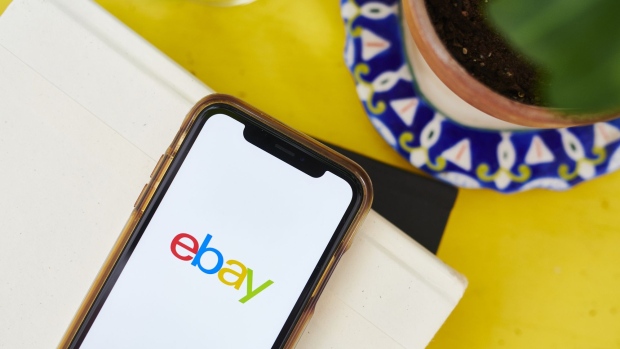Jul 14, 2020
Online marketplaces offer alternative income stream amid COVID-19
The Canadian Press

After losing her job in the film industry at the start of the pandemic, 29-year-old Terra McNerthy found herself on a sharply reduced budget.
At the time, the Toronto-based production assistant and her partner had just started looking to redecorate their home after their roommate moved out. But on a single income, the pair couldn't afford new furniture or plants. So, they turned to Facebook Marketplace, the social media giant's popular secondhand shopping platform.
"We almost immediately said 'okay we're rearranging everything and we're getting plants," McNerthy says. "We very quickly acquired many plants."
She went on to buy a couple of chairs and other household items at a low price, as a growing number of millennials are doing in the wake of COVID-19. With thrift stores and discount retailers closed and historically large numbers of Canadians unemployed, sites like Marketplace, Kijiji and Craigslist are seeing surges in use.
But what started as a way for McNerthy to fill her newfound spare time and furnish her apartment on a budget has swiftly turned into something more. After buying a number of secondhand decorative plants on the cheap, she's taken to propagating them and reselling the seedlings on the platform.
"It's essentially like getting infinite plants," McNerthy says. It's become a hobby and a way to boost her partner's income as they ride out the pandemic at home.
Toronto researcher Annie Bok says that while she's now more financially stable and primarily uses online marketplaces to get rid of unwanted goods, there was a time shortly after graduating from school when the secondhand trading platform Bunz was the first place she looked before buying anything new.
"I would never spend money on stuff during that time," she recalls. "I got everything I needed from Bunz. This included toiletries, things like toothpaste and mouthwash and bath stuff … I got clothes, I got makeup, I got basically anything that I wanted and needed."
Though Bok says it's difficult to quantify the average discount she could land by shopping via Bunz, she recalls some of the better deals she scored:
A hydrating hair mask for half its $80 retail value, a $40 face powder for the cost of one public transit fare, and a $100 dress for free from a generous stranger who no longer wanted it.
For Bok and McNerthy, buying secondhand has been a saving grace through periods of financial instability. McNerthy notes that she's also found a more eclectic assortment of items through secondhand shopping than what she could find at retailers in her price range: "There's a lot of more interesting, unique pieces available when you're buying secondhand," she says.
But both say secondhand sales shouldn't be taken lightly in a pandemic era. They both wear masks when meeting up with buyers or sellers and do their best to social distance. Bok puts items she's selling in plastic baggies for travel, which buyers can then discard before disinfecting what's inside.
Bok also warns first-time secondhand shoppers to be wary: It's easy to get roped into scams or bad deals if you're not careful. She suggests looking up the retail value of every item you purchase to make sure what you're buying is at an equal or lower price than what its owner paid for it. "You really have to be really vigilant about checking the value of items," she says.
And if an item looks different in person than it does online, there's no harm in negotiating on price or walking away from the sale. Be prepared to make an e-transfer, rather than paying with cash, to avoid any confusion over making change if you negotiate a lower price than what was initially offered (this also keeps every sale contactless).
McNerthy says those selling used items should be similarly cautious about how they post: Share appealing photographs from multiple angles with clear, concise captions and key words that increase searchability. With use of Marketplace on the rise, so is competition for buyers' attention, so market your items accordingly.
"You don't have to be an amazing photographer by any means, but just make sure the whole thing is in the photo, make sure it's not blurry, make sure it's reasonably well lit," McNerthy says. "It's an infinite scroll of pictures. That's what's going to catch people's eye as they're scrolling.






